- No products in the cart.
What is Soldering? A Guide to the Best Soldering Equipment
Aug
15
2022
Soldering is a method for joining two pieces of metal together. A soldering iron is used to melt the solder down to a liquid form and acts like a glue to hold the two pieces together before cooling occurs. The solder is typically a blend of copper, tin, bismuth, silver, silicon, and zinc. Solders must have certain distinctive characteristics such as a low melting point, solidify quickly, and conduct electricity for creating circuits.
There are ten tools that are typically used when soldering. These include a soldering station, a soldering iron, a soldering gun, a desoldering station, a soldering pencil, a solder, a solder flux, a solder flux pen, solder seal wire connectors, and solder tips.
What’s The Difference Between a Soldering Iron And a Soldering Gun?
While both soldering guns and soldering irons are used for joining two pieces of metal, there are some differences. A soldering gun is operated with a trigger and has more power, provides more flexibility, is more capable of working in confined places, heats up faster, is more energy efficient than soldering irons, is more efficient working on heavier jobs, and has more voltage.

Soldering irons are lighter, easier to work with over an extended period of time, offer a wider variety of sizes, provide many different tips for a wide range of projects, are more efficient, and they stay hot longer for a smoother workflow.
What Should I Look For When Buying a Soldering Station?
A soldering station is either digital or analog and consists of a soldering tool and a station. The station is separate and controls the soldering iron and temperature. The stations are mostly used in manufacturing units, in electronic PCB assembly, and in the mass repairing of circuit boards.
There are several things to consider when purchasing a soldering station. Be sure it is ESD-safe or that these stations are designed so that no static charge will build up on the iron or on the station.
Make sure the station processes an accurate temperature. Digital units usually provide a more accurate temperature control. They have settings to control the temperature digitally and also a digital display to indicate the current temperature.
You should make sure the design is ergonomic. This will help avoid fatigue when hand soldering for any length of time. Also, look for a station with a wide selection of soldering tips to expand your range of projects.
Can You Solder Aluminum?
You can solder aluminum but it is much more difficult than other metals. Aluminum is coated with a layer of aluminum oxide which first must be scraped off before soldering. Aluminum also has a low melting point which means you’ll need a special soldering iron with a setting for a lower temperature.
To remove the aluminum oxide from the aluminum, use either a steel brush, sand, or clean with acetone. Apply flux to prevent the aluminum oxide from building back up again. Then apply the heated solder to the aluminum.
What Type of Soldering Iron/Station is Best for Electronics?
There are certain types of soldering irons and stations that are better for electronics. Pencil type soldering irons are best to use for small electronics or soldering where there is more detail. They are simple to use and more compact which makes them ideal for repairing electrical circuit boards and small electronics.
Soldering irons that are high powered speed up the process and prevent damage to electronic components from too much exposure to heat. A soldering iron that is temperature controlled works best. Since all electronics do not use the same solder type, it’s best to have one with an adjustable temperature.
A soldering gun is ideal for electronics where the soldering needs extensive work such as wire or electrical terminal soldering.
A soldering station is ideal for certain electronic board repairs such as replacing an electrical chipset.
What Wattage Soldering Iron is Best?
The best wattage depends on how much experience you have with soldering. A 20 to 50 watt power rating is recommended for those who are new to soldering or for those who are working on basic projects.
For professionals, a high power soldering iron is ideal with a power rating of 60 to 100 watts. This iron will heat up quickly at a higher temperature for wire that is hard to melt.
What Is The Best Soldering Iron?
There are many soldering irons on the market. One of the best soldering irons is the Hakko FX-888D. It heats up fast, has a wattage of 70, and the temperature rebounds quickly when soldering which results in a smooth continuous workflow.
It has a digital display, a thin pen that can easily be held and stays cool to the touch. The station and stand are made out of durable metal and plastic and are separate from the iron which can be a space saver at times. The Hakko T12 and T15 tips are interchangeable, but the T15 tips seem to be just for the North American market and all other markets have the T12 tips.
Lab Pro offers a large variety of soldering irons. For over 40 years, Lab Pro Inc. has been committed to delivering the highest quality soldering irons, hand tools, chemicals, lab equipment, distance learning kits, lab supplies, and cleanroom PPE apparel to medical device companies and laboratories worldwide. To learn more, visit the biggest Lab Supply showroom in California, or contact us online or at 888-452-2776.














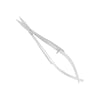


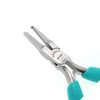


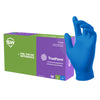









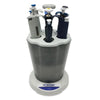








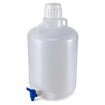







Irresistible! Thank you so much for this kind and good service. Your services is better than better.
https://www.additiveinn.com/